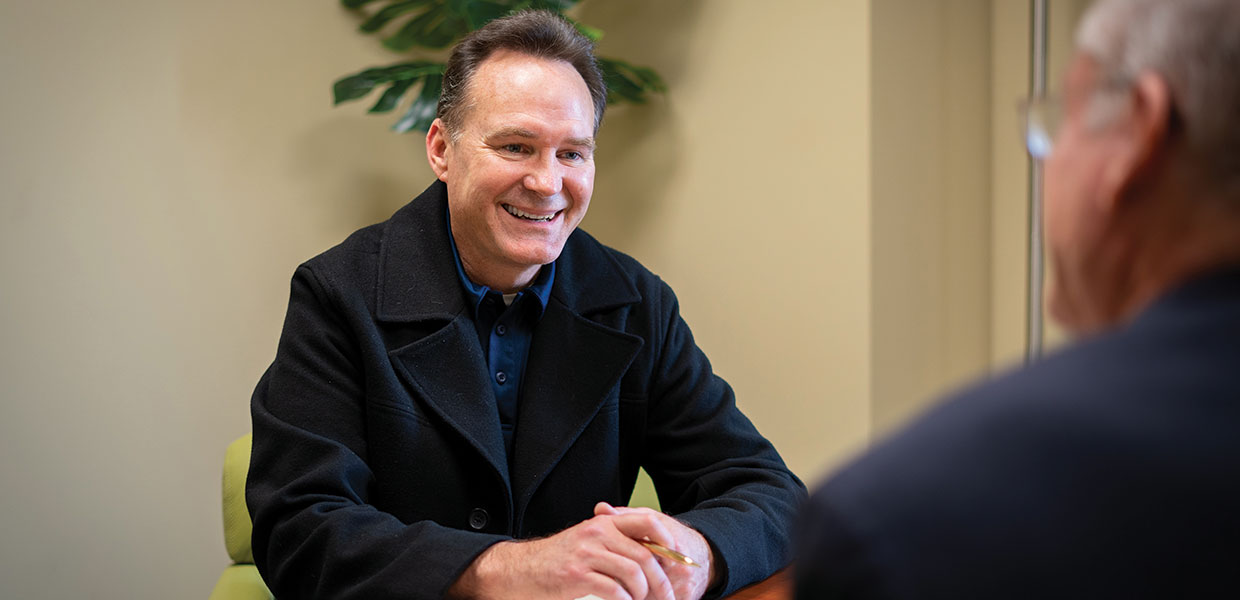
Shane Hochstetler


Shane Hochstetler
The pastoral ministry could easily be described as a journey through hills and valleys. Many go through mountain-top experiences of spiritual connectedness to God and positive outcomes in their churches, as evidenced by successful church board meetings, programming, and souls being won to Christ. However, many also experience the lows of feeling inadequate, unsuccessful, or that their ministry really isn’t making positive changes in the lives of their friends and members. Pastors rarely feel that it is appropriate to seek encouragement or help from others because, well, it is the pastor’s job to be that for everyone else. As a result, many pastors work alone; become their own boss, so-to-speak; and take responsibility for their success and failure. Often this to their demise, along with the churches they lead.
In 2018 the Gulf States Conference decided to attempt to change this standard method of operation. Part of that change was to eliminate the traditional ministerial department and director position. A new position was created, vice president for pastoral development. Initially led by Brian Danese, now vice president of church development, the position is currently filled by Cary Fry, formally a full-time pastor in Gulf States. With the new position came a new strategy: each pastor in the Conference would receive a quarterly visit from Dave Livermore, president of Gulf States; Danese; or Martin Fancher, executive secretary of Gulf States, in the pastor’s home or at the Conference office. The visits would last several hours and allow the pastor to share their current struggles; receive advice from the experienced leaders; and also share their ideas, goals, and plans for advancing the Gospel in their districts.
A planning guide was created that allowed the pastors to set goals for baptisms, attendance, tithe and offering, church training, and personal development. Along with setting those goals, the details of which were entirely left to the pastor, was an encouragement to write down the plan they would use to reach those goals. As the next quarter’s visit came along, each of these goals was assessed and adjusted if necessary, and advice was given on whether the plan that was implemented was working, or if another strategy ought to be used. The specifics of each pastor’s plan was not mandated; however, they were each required to have some plan and follow through with it.
As the meetings continued, those who were diligent in applying their plans to their districts saw a positive outlook for their ministry. Even if success wasn’t met at every turn, many were glad that they had something in place to measure their progress. Samuel Riemersma, pastor of the Community Church in Meridian, Mississippi, stated, “I’m impressed with the amount of time that administration is spending on meeting with us. I really feel that they are closely connected to the pastors in the field.” Riemersma also added that in using this new strategy, “They’re truly modeling pastoral ministry, showing us by example how to pastor our members.” Dan Thompson, pastor of the Montgomery, Alabama, First Church, added, “Having the Conference follow up with us about our plans makes a big difference. It helps to keep pastors accountable to the work. And, not because the administration is looking to find fault with us, but because they want us to succeed.”
Participating in these quarterly visits also provides pastors with an opportunity to revisit the positive work they have done over the last several months. It allows them to see their successes and have someone there to celebrate that success with them. Navigating the hills and valleys of pastoral ministry is no longer a journey that needs to be taken alone. Support from Conference officials and leaders shows evidence that we’re all in the same work with the same ultimate goal. To encourage each other and support each ministry is time worth spending.
is the communication director at the Gulf States Conference.
Gulf States | February 2019



Comments are closed.